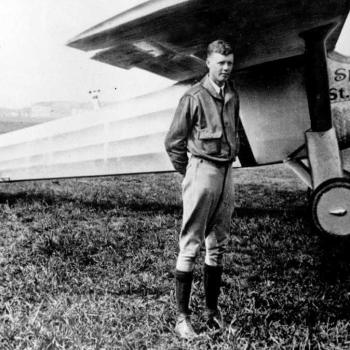Charles Lindbergh began his transatlantic flight in 1927.

Event Description
On May 20, 1927, Charles Lindbergh began the first non-stop flight from New York to Paris and the first solo flight across the Atlantic, taking off from Roosevelt Field in New York in his plane The Spirit of St. Louis. Thirty-three and a half hours later, "Lucky Lindy" landed safely in Paris, France, becoming the first person to fly solo across the Atlantic.
Classroom Activity
Charles A. Lindbergh: A Human Hero, a biography for younger readers, has a subtitle that might appear to be an oxymoron by contemporary standards. Often, society portrays heroes as superhuman, forgetting that heroes are ordinary people who manage to face extraordinary challenges successfully.
Write the words HUMAN HERO on the board and ask students to consider what might be meant by this phrase. Next, ask groups of students to think of people, alive or dead (or fictional), who fit the category "human hero." Then place all names students have mentioned on the board. Ask students to brainstorm a list of attributes or qualities these people share. Can this list of attributes and/or qualities lead to a definition of heroism? Students can finish by reading a biography of a selected hero and summarizing it using the Bio-Cube interactive.
Websites
The Lindbergh homepage includes links to a great collection of resources. Included are flight plans, biographical information, a timeline, video clips, and more.
Part of the PBS American Experience series, this website features information about the film Lindbergh. Also included are a timeline of aviation milestones, maps of Lindbergh's transatlantic flight, and a teacher's guide.
View an exact replica of The Spirit of St. Louis in flight!
This Smithsonian online exhibit includes technical specifications and pictures of Lindbergh's famous plane. The page features a timeline of the milestones of flight.